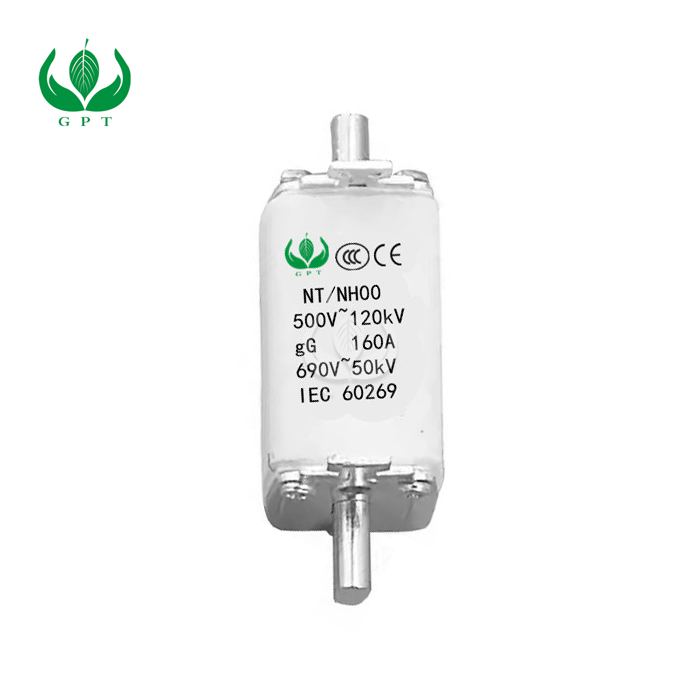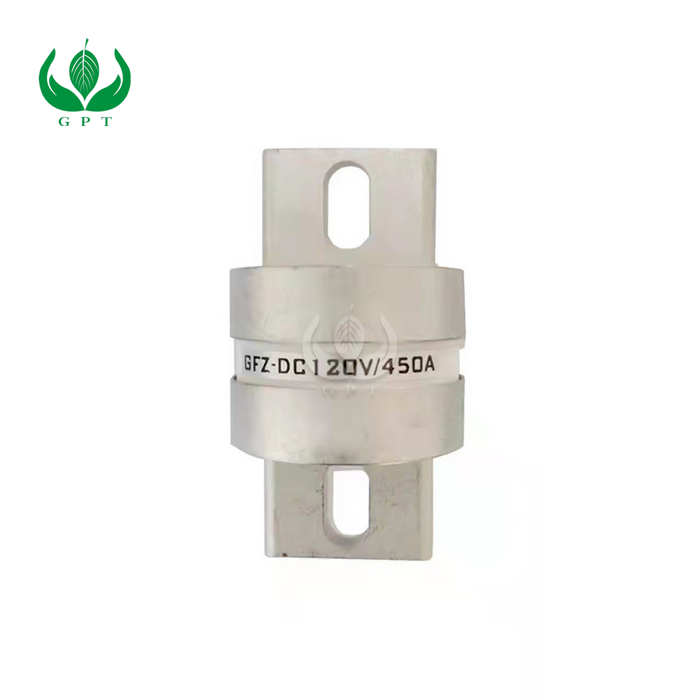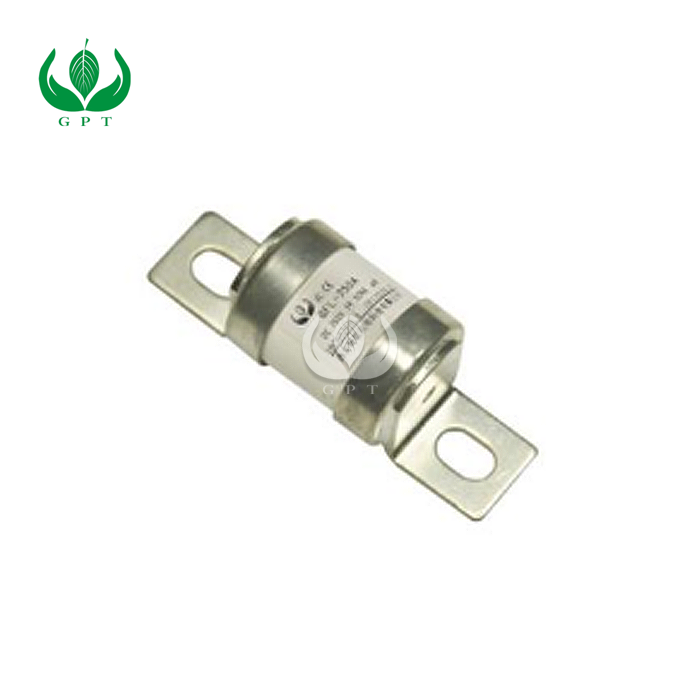In the rapidly evolving world of power electronics, DC semiconductor fuses have emerged as critical protection components that safeguard sensitive electronic equipment from overcurrent conditions. These specialized fuses combine ultra-fast response times with precise current limitation capabilities, making them indispensable in modern power systems. Whether protecting expensive semiconductor devices in electric vehicles, solar inverters, or industrial drives, DC semiconductor fuses offer unmatched reliability and performance that conventional fuses simply cannot match.
Understanding the Core Functions of DC Semiconductor Fuses
Primary Protection Mechanisms
DC semiconductor fuses serve as the first line of defense against catastrophic failures in power electronic systems. Unlike traditional fuses that rely solely on thermal melting, these advanced protection devices utilize a combination of thermal and magnetic effects to achieve incredibly fast clearing times. When fault currents occur, the fuse element heats up rapidly, creating an arc that must be extinguished quickly to prevent damage to downstream components.
The unique construction of DC semiconductor fuses allows them to interrupt fault currents within microseconds, far faster than mechanical circuit breakers or standard fuses. This speed is crucial when protecting sensitive semiconductor devices like IGBTs, MOSFETs, and thyristors, which can fail permanently if exposed to overcurrent conditions for even brief periods. The fuse accomplishes this through specialized sand filling that absorbs arc energy and cools the plasma, effectively breaking the current path.
Current Limitation and I²t Characteristics
One of the most valuable functions of DC semiconductor fuses lies in their current-limiting properties. During a fault condition, these fuses restrict the peak let-through current to levels well below what the circuit would experience without protection. This limitation happens through the rapid increase in arc voltage across the fuse element, which opposes the flow of current and forces it to decrease.
The I²t (ampere-squared seconds) rating represents the total energy the fuse allows to pass during clearing. DC semiconductor fuses maintain exceptionally low I²t values, ensuring minimal stress on protected components. This characteristic becomes particularly important in applications where multiple semiconductor devices operate in parallel, as it prevents cascading failures that could damage entire power modules.
Coordination with System Protection
Modern power systems require sophisticated protection coordination to ensure selective fault isolation. DC semiconductor fuses excel in this area by offering predictable time-current characteristics that engineers can rely on during system design. The fuses work harmoniously with other protection devices, including electronic trip units, current sensors, and control systems, to create comprehensive protection schemes.
These fuses also provide visual indication of operation through built-in indicators, allowing maintenance personnel to quickly identify and replace blown fuses. Some advanced models even incorporate auxiliary contacts that signal the control system when a fuse operates, enabling automatic shutdown procedures and preventing continued operation with reduced protection.
Key Features That Define Modern DC Semiconductor Fuses
Advanced Material Technology
The performance of DC semiconductor fuses depends heavily on the materials used in their construction. Modern designs incorporate silver or copper alloy elements with precisely controlled cross-sections that determine the fuse's electrical characteristics. These elements are surrounded by high-purity quartz sand that serves multiple purposes: arc quenching, heat dissipation, and mechanical support.
The fuse body typically consists of high-grade ceramic or fiberglass materials that withstand extreme temperatures and pressures generated during fault clearing. These materials maintain their structural integrity even after repeated thermal cycling, ensuring long-term reliability in demanding applications. Special coatings and treatments further enhance the fuse's resistance to environmental factors like humidity and chemical exposure.
Voltage Rating and Arc Extinction
DC applications present unique challenges for fuse design due to the absence of natural current zeros that occur in AC systems. DC semiconductor fuses must generate sufficient arc voltage to force the current to zero and prevent re-ignition. This requirement leads to longer fuse bodies and more sophisticated internal designs compared to AC fuses of similar current ratings.
The voltage rating of a DC semiconductor fuse indicates the maximum system voltage at which it can safely interrupt fault currents. Modern designs achieve ratings up to 1500VDC or higher, making them suitable for high-power applications in renewable energy systems and electric vehicle charging infrastructure. The fuse maintains its interrupting capability across the entire voltage range, providing consistent protection regardless of operating conditions.
Thermal Management and Aging Characteristics
Heat dissipation plays a crucial role in fuse performance and longevity. DC semiconductor fuses incorporate design features that promote efficient heat transfer from the element to the surrounding environment. Large end caps and terminals provide thermal mass and conduction paths, while the fuse body design maximizes surface area for convective cooling.
Unlike some protection devices that degrade over time, properly applied DC semiconductor fuses maintain stable characteristics throughout their service life. The aging process is minimal when operating within specified parameters, with no significant changes in resistance or time-current characteristics. This stability allows system designers to rely on consistent protection performance without frequent recalibration or replacement.
Applications Across Modern Power Systems
Electric Vehicle and Charging Infrastructure
The automobile industry's move toward electrification has made a huge need for effective DC protection devices. DC semiconductor fuses keep important parts of electric car powertrains safe, such as traction inverters, DC-DC converters, and onboard chargers. These fuses need to be able to handle the tough conditions in cars and keep protecting throughout a broad variety of temperatures.
Charging infrastructure is another important area of application. DC fast chargers need strong protection for power conversion equipment. When charging quickly, the high currents and voltages put a lot of stress on semiconductor devices. This is why choosing the right fuse is so important for system dependability. DC semiconductor fuses in these situations need to work with car protection systems while also meeting safety criteria for public charging stations.
Renewable Energy Systems
Solar photovoltaic installations and wind power systems rely heavily on DC semiconductor fuses for inverter protection. In solar applications, these fuses protect against reverse current flow, ground faults, and string overcurrent conditions. The fuses must operate reliably in outdoor environments with extreme temperature variations and potential exposure to moisture.
Wind turbine converters face unique challenges due to variable power generation and grid disturbances. DC semiconductor fuses in these applications protect the DC link capacitors and power modules from fault currents while allowing normal operation during power fluctuations. The fuses' fast response prevents damage during grid faults that could otherwise destroy expensive power electronics.
Industrial Drives and Power Supplies
Variable frequency drives, servo amplifiers, and industrial power supplies represent traditional strongholds for DC semiconductor fuse applications. These systems demand precise protection that doesn't interfere with normal operation, including motor starting currents and regenerative braking events. The fuses must discriminate between acceptable overloads and genuine fault conditions.
Uninterruptible power supplies and data center power systems also utilize DC semiconductor fuses extensively. These applications require the highest reliability levels, as protection device failure could lead to costly downtime. The fuses protect battery systems, rectifiers, and inverters while maintaining power quality for sensitive electronic loads.
Conclusion
DC semiconductor fuses are an important technology that makes it possible for current power electronic systems to work safely and reliably. They are indispensable in applications like electric cars and renewable energy systems because they respond very quickly, restrict current, and are built to last. As power electronics get better, these particular protective devices will become more and more vital for keeping systems safe and reliable.
FAQs
What makes DC semiconductor fuses different from regular fuses?
DC semiconductor fuses feature specialized designs for ultra-fast operation, typically clearing faults in microseconds compared to milliseconds for standard fuses. They incorporate advanced arc-quenching materials and longer bodies to handle DC arc extinction challenges.
How do I select the right DC semiconductor fuse for my application?
Selection involves considering voltage rating, continuous current, I²t values, and coordination with protected devices. The fuse should have a voltage rating exceeding system voltage and current rating approximately 1.3-1.5 times the normal operating current.
Can DC semiconductor fuses be tested without destroying them?
Yes, resistance measurements can verify fuse integrity without operation. However, complete performance testing requires destructive testing, so manufacturers provide extensive test data for system design verification.
Your Trusted DC Semiconductor Fuse Manufacturer | Green Power
Xi'an Green Power Technology specializes in manufacturing high-quality DC semiconductor fuses for global markets. With over 20 years of expertise and certifications including ISO9001, IATF16949, and CE, we deliver reliable protection solutions for EV, renewable energy, and industrial applications. Our technical team provides rapid response to custom requirements, ensuring optimal fuse selection for your specific needs. Contact our expert engineers at fusemaker@163.com to discuss your DC semiconductor fuse requirements and discover how our products can enhance your system protection.
References
Smith, J.K., & Anderson, P.L. (2023). Advanced Protection Strategies for Power Electronic Systems. IEEE Power Electronics Society Publications.
Chen, W., & Kumar, R. (2024). Semiconductor Fuse Applications in Modern Electric Vehicles. Journal of Automotive Electrical Systems, 15(3), 234-251.
Thompson, M.E. (2023). DC Protection Fundamentals for Renewable Energy Systems. International Conference on Sustainable Power Generation Proceedings.
Rodriguez, C., & Park, S.H. (2024). Current Limiting Characteristics of Modern DC Fuses. Power Electronics Technology Review, 28(7), 112-128.
Williams, D.R. (2023). Thermal Management in High-Power Semiconductor Protection Devices. Thermal Engineering International, 19(4), 445-462.
Liu, X., & Johnson, B.A. (2024). Coordination of Protection Devices in DC Distribution Systems. Electric Power Systems Research Quarterly, 31(2), 89-104.



_1752570870823.webp)







